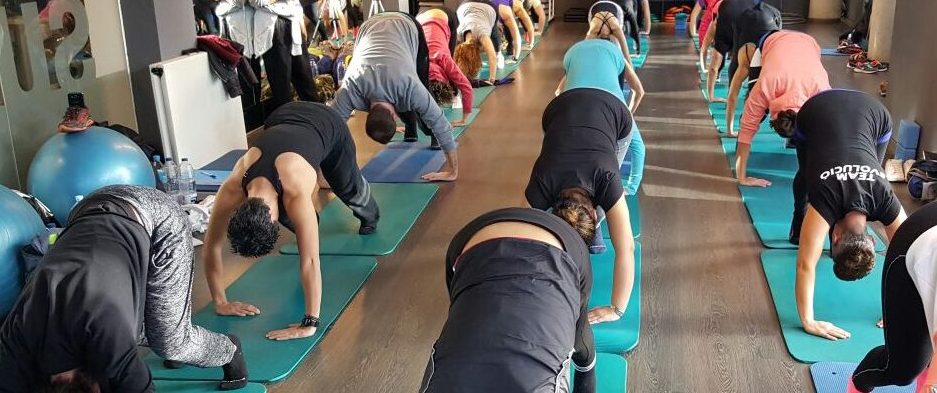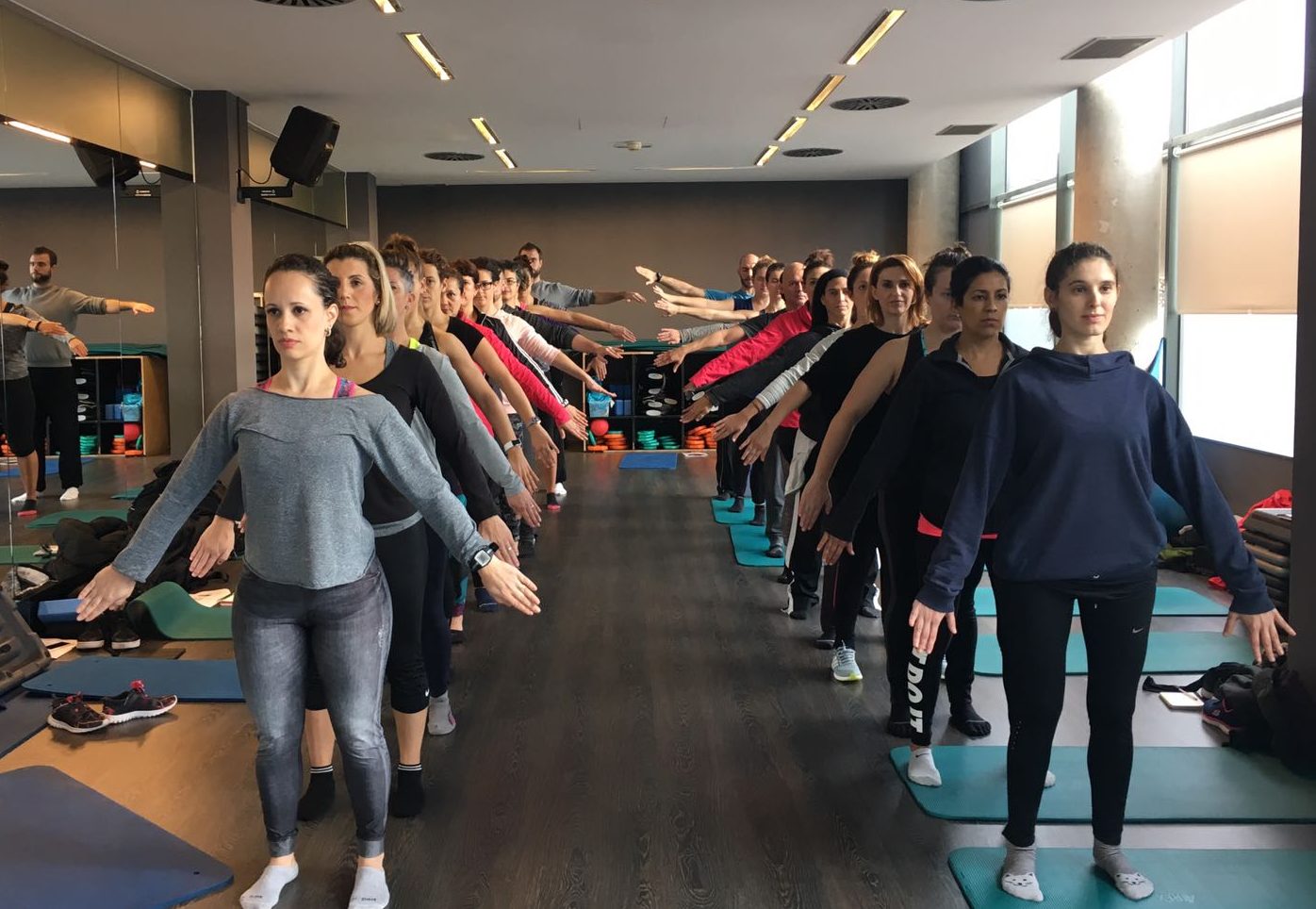Low Pressure Fitness seems to have become one of the summer’s catchwords in the area of wellness and fitness. Indeed, Spanish celebrities and Brazilian models alike have chosen this workout program to show off a stunning figure and a trim waistline right after childbirth. So what is the secret behind this colossal success? Well, Low Pressure Fitness combines several training workouts, namely yoga, hypopressives, global postural reeducation and breathing retraining. All of them have three things in common: low intensity, minimized physical impact and reduced psychological pressure. More specifically, these include yoga, hypopressives and reeducating breathing and body posture.
Today hypopressives, often and inaccurately called abdominal hypopressives, have become quite well-known. They are a development of the notions of breath (pranayama) and the abdominal lock (uddiyanha bandha), both coming from Hatha Yoga. According to the yogic tradition, bandha means to lock, to close off or to stop. Bandhas are used to contain and manage the energy flow or prana in the body. When we practice a bandha the flow of energy to a specific part of the body is blocked. When the bandha is released, the energy floods back through the body with an increased pressure. Bandhas are commonly used to tone up the body core and massage the lower visceral organs.
In addition to this hypopressive exercise taken from yoga, Low Pressure Fitness includes various breathing patterns, often found in rehab programs for the core and pelvic muscles and for breathing. It is a widely acknowledged fact that almost 90% of population suffer from some sort of dysfunctional breathing pattern, which causes direct prejudice to general body posture and to the muscles in the abdominal and pelvic floor.
Indeed, the entire body is interrelated in such a way that if one domino tile were to fall, the entire structure would start crumbling. Training breathing with a health and therapy program is often a life-changing experience. After all, life is breath and breathing is life. Low Pressure Fitness includes a wealth of specific exercises to improve your life through breathing. For example, and just to mention some, we have the techniques of costal breathing, full thoracic inhales, deep slow exhales, control of ventilatory frequency and pranayamic relaxing breathing. These breathing patterns can help adjust the rhythm and depth of the inhale and exhale, improve the ventilatory threshold and develop stress or anxiety management. A variety of myofascial postural reeducation techniques complete a method, which yields multiple benefits, ranging from the preventive to the therapeutic.
Low Pressure Fitness poses originate in Ashtanga Yoga and directly improve the body posture. Low Pressure Fitness will provide exquisitely precise and customized corrections of your body poise. Close attention is given to correcting body posture, aiming towards the highest accuracy of the right stance, in accordance with the myofascial body chains. Correct bearing is essential to relieve lower, upper and middle back pain, and other results of the bad habits of a sedentary life-style. Indeed, retraining posture and the muscles involved in deportment are a priority of our training programs. Certainly, a healthy spine, able to withstand the upright position and the efforts of everyday life is little less than a life-long health insurance.
Both women and men can benefit from practicing low pressure training. It is perfect for those whose physical ailments do not allow them to carry out more demanding exercises. It is also ideal for low intensity prep in any other training programs, by starting out on low intensity activities, or even as a combo with your high-intensity workouts.
Finally, we would like to note that just like with any other training program, putting yourself in the hands of qualified professionals is crucial. As the saying goes, cheap can be expensive, and you don’t want to play with your health. A qualified trainer can guide and adapt the training to your specific needs and make sure you are not hurting yourself with your workout. You will find a full list of qualified trainers on www.lowpressurefitness.com/lpfjournal, all of them either physiotherapists or experts in exercise sciences in your city. If you have any physical or mental health problem we recommend talking to your doctor to make sure you are ready to start a routine exercise program. Pregnant women, patients with cardiac, respiratory or cardiovascular conditions or any other physical ailment are strongly advised to check out with their GP before taking up Low Pressure Fitness or any other similar activities.

